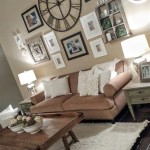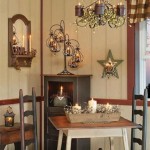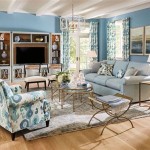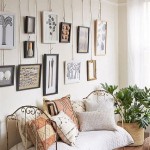How To Decorate A Bedroom With A Window Above The Bed
Decorating a bedroom with a window directly above the bed presents a unique design challenge. While a window can provide natural light and create an airy ambiance, its placement can impact furniture arrangement, privacy, and overall aesthetic. This article will explore strategies for effectively incorporating a window above the bed into a cohesive and visually appealing bedroom design. Considerations will include window treatments, headboard alternatives, space optimization, and the creation of a balanced and harmonious environment.
Addressing Functional Concerns and Maximizing Space
The first step in decorating a bedroom with a window above the bed involves addressing practical considerations. Natural light, while desirable, can also disrupt sleep patterns if not properly managed. Furthermore, the window’s placement affects furniture placement, potentially impacting the overall flow and functionality of the room. Addressing these concerns early will lay the foundation for a successful design.
Window Treatments: Choosing appropriate window treatments is crucial for controlling light and ensuring privacy. Several options are available, each offering different levels of light filtering and insulation. Blackout curtains are an excellent choice for bedrooms where minimizing light is a priority. These curtains effectively block out sunlight, promoting better sleep, especially for individuals sensitive to light intrusion. Alternatively, layered window treatments can provide greater flexibility. Combining sheer curtains with heavier drapes allows for adjusting the amount of light entering the room throughout the day. Sheer curtains provide a soft, diffused light and a degree of privacy, while heavier drapes can be drawn for complete darkness and enhanced insulation. Roman shades or cellular shades offer a more streamlined appearance and are available in a variety of opacities to control light levels. These shades can be fully raised for maximum light or lowered to varying degrees to filter light or provide complete privacy. When selecting window treatments, consider the overall aesthetic of the room and choose materials and colors that complement the existing décor. The hardware used to hang the window treatments should also be carefully selected to ensure a cohesive and visually appealing look.
Headboard Alternatives: A traditional headboard may not be the most practical choice when a window is directly above the bed. Instead, consider alternative headboard options that complement the window’s presence. One approach is to use a long, narrow shelf mounted below the window. This shelf can serve as a functional and decorative element, providing space for books, plants, or small decorative items. The shelf should be carefully chosen to match the style of the room and should be securely mounted to the wall. Another option is to create a gallery wall around the window. This involves arranging a collection of artwork, photographs, or decorative objects around the window to create a visually interesting focal point. The gallery wall should be thoughtfully curated to ensure a cohesive and balanced arrangement. The artwork should complement the color scheme and style of the room, and the arrangement should be visually appealing. Upholstered wall panels can also serve as a comfortable and stylish headboard alternative. These panels can be attached to the wall below the window, providing a soft and cushioned surface. The panels can be customized in a variety of fabrics and colors to match the décor of the room. When choosing a headboard alternative, consider the overall style of the room and select an option that complements the window’s presence and enhances the overall aesthetic.
Space Optimization: In smaller bedrooms, optimizing space is essential. Furniture placement should be carefully considered to maximize functionality and create a sense of openness. Avoid placing tall furniture directly in front of the window, as this can block natural light and make the room feel cramped. Instead, opt for lower-profile furniture that allows light to flow freely. Consider using wall-mounted nightstands or floating shelves to save floor space. These options provide storage without taking up valuable floor space, making the room feel more spacious. Under-bed storage is another effective way to maximize space. Storage containers or drawers can be placed under the bed to store extra linens, clothing, or other items. This helps to keep the room clutter-free and organized. Multi-functional furniture is also a valuable asset in small bedrooms. A storage ottoman can serve as both seating and storage, while a desk with built-in shelves provides a workspace and storage in one. When optimizing space, prioritize functionality and choose furniture that serves multiple purposes. This will help to create a comfortable and efficient living space.
Creating Visual Balance and Harmony
Achieving visual balance and harmony is paramount in a bedroom with a window above the bed. The window's placement can create an imbalance in the room's visual weight, requiring careful consideration of color, texture, and pattern to establish a cohesive and aesthetically pleasing environment. A balanced room feels comfortable and inviting, promoting relaxation and tranquility.
Color Palette: The color palette plays a significant role in creating visual balance. Light and airy colors can help to brighten the room and create a sense of spaciousness, particularly important when working with a window above the bed that might initially feel imposing. Soft pastels, neutral tones, and whites are excellent choices for walls, bedding, and furniture. These colors reflect light, making the room feel larger and more open. Incorporating accent colors can add visual interest and personality without overwhelming the space. Accent colors can be introduced through throw pillows, blankets, artwork, or decorative accessories. When choosing accent colors, consider the overall style of the room and select colors that complement the existing décor. Darker colors can be used sparingly to add depth and contrast, but should be balanced with lighter colors to prevent the room from feeling too heavy or closed in. The key is to create a harmonious color scheme that promotes relaxation and tranquility.
Texture and Pattern: Introducing texture and pattern can add depth and visual interest to the room. Texture can be incorporated through various materials, such as woven fabrics, natural fibers, and textured wall finishes. A textured throw blanket, rug, or curtains can add warmth and tactile appeal to the room. Patterns can be used to add visual interest and personality, but should be used judiciously to avoid overwhelming the space. Small-scale patterns are generally more subtle and versatile, while larger-scale patterns can be used as focal points. Consider using patterned throw pillows, bedding, or wallpaper to add visual interest. When incorporating texture and pattern, consider the scale of the room and the existing décor. In smaller rooms, it is best to stick to smaller-scale patterns and textures to avoid making the room feel cramped. In larger rooms, you can experiment with larger-scale patterns and textures to create a more dramatic effect. The key is to create a balanced and cohesive look that is visually appealing and relaxing.
Symmetry and Asymmetry: Employing symmetry and asymmetry can contribute to visual balance. Symmetry involves arranging objects in a mirrored fashion, creating a sense of order and formality, and can be effective in creating a sense of calm. For example, placing matching nightstands on either side of the bed can create a balanced and symmetrical look. However, too much symmetry can feel rigid and uninspired. Asymmetry, on the other hand, involves arranging objects in a non-mirrored fashion, creating a sense of dynamism and visual interest. Asymmetry can be achieved by using different-sized objects or by placing objects at different heights. For example, pairing a tall lamp on one side of the bed with a stack of books on the other can create an asymmetrical look that is visually appealing. When using asymmetry, it is important to maintain a sense of balance. This can be achieved by distributing visual weight evenly throughout the room. The key is to create a harmonious balance between symmetry and asymmetry to create a visually appealing and balanced space.
Enhancing the Window as a Focal Point
Instead of viewing the window above the bed as a design obstacle, it can be embraced and enhanced as a focal point. This approach requires careful consideration of the window’s architectural features, the surrounding wall space, and the desired mood of the room. Transforming the window into a focal point can elevate the overall design and create a unique and visually striking bedroom.
Architectural Enhancements: Highlighting the architectural features of the window can draw attention to its unique characteristics. This might involve adding decorative molding around the window frame, painting the window trim in a contrasting color, or installing custom window treatments that emphasize the window's shape and size. Decorative molding can add a touch of elegance and sophistication to the window surround. Painting the window trim in a contrasting color can make the window stand out and become a focal point. Custom window treatments can be designed to complement the window's architectural features and add a touch of personality to the room. Consider using window treatments with unique patterns, textures, or embellishments. The goal is to enhance the window's natural beauty and integrate it seamlessly into the overall design.
Surrounding Wall Décor: The wall space surrounding the window provides an opportunity to create a backdrop that enhances its visual impact. Consider using wallpaper, paint, or textured wall finishes to create a visually interesting backdrop. Wallpaper can add pattern, color, and texture to the wall, creating a focal point. Paint can be used to create a subtle or dramatic backdrop, depending on the color and finish chosen. Textured wall finishes can add depth and dimension to the wall, creating a more tactile and visually appealing surface. When choosing wall décor, consider the overall style of the room and the desired mood. Select materials and colors that complement the window's architectural features and enhance its visual impact. Artwork, mirrors, or decorative objects can also be used to enhance the wall space surrounding the window.
Night Lighting and Ambiance: Strategic lighting can transform the window area into a cozy and inviting space. Consider installing sconces on either side of the window to provide ambient lighting. These sconces can be used to create a soft and warm glow, enhancing the overall ambiance of the room. String lights can also be used to add a touch of whimsy and create a magical atmosphere. Drape string lights around the window frame or across the headboard to add a warm and inviting glow. Table lamps can be placed on nearby nightstands to provide task lighting for reading or other activities. When choosing lighting fixtures, consider the style of the room and the desired mood. Select fixtures that complement the window's architectural features and enhance its visual impact. The goal is to create a lighting scheme that is both functional and aesthetically pleasing, transforming the window area into a cozy and inviting space.

10 Fabulous Solutions For A Pesky Window Over Your Bed My Blessed Life

10 Fabulous Solutions For A Pesky Window Over Your Bed My Blessed Life

Long Horizontal Window Over Bed Google Search Bedroom Wall Decor Above Home Design

High Window Above Bed Like The Blinds Modern Bedroom Home

20 Small Windows Above Bed Ideas Window Bedroom Design Decor

Window Over Bed Inspiration Round Up Farmhouse Living

Pin On Chambre A Coucher Céline Et Marco

10 Fabulous Solutions For A Pesky Window Over Your Bed My Blessed Life

Pin On My Design Style

Rectangular Window Over Headboard Design Ideas
Related Posts







